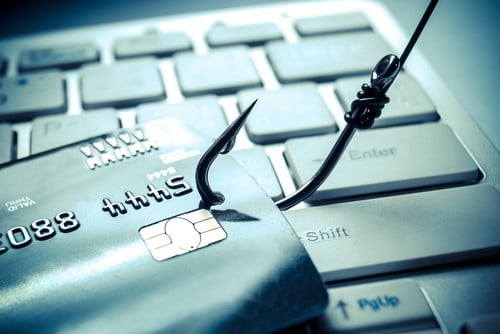Fake news has been plaguing our notifications tabs and news feeds for quite a while now, and reports have shown that people are having a hard time separating fact from fiction.
But it's not just misinformation we have to worry about. A new analysis from Trend Micro shows just how easy it is to facilitate the spread of fake news, and how cyber criminals are using these same techniques to manipulate public opinion.
Whether their goal is to sway an election, shape public opinion through social media, or just gain street cred among fellow hackers, here are four ways that cyber criminals are using fake news techniques to commit crimes.
1. They create fake celebritiesThe number of followers a social media account has can drastically change the perception of authority that figure has.
Are you more likely to stop and read a tweet that has 10 retweets or 10,000? How much more likely are you to agree or disagree with its content if there are 5 likes or 5,000?
However, social media accounts with mass followings can't just pop up overnight. The report outlines a campaign using Chinese messaging service Weibo to gain 300,000 followers in one month. You can get 500 followers the first day, leading up to 11,500 followers the first week, and so on.

Cost: $2,600
2. They start street protests
It's possible that fake news spread across social media channels could have enough of an impact to start actual protests.
For example, in February of 2017, doctored photos of the police setting fire to camps at the Standing Rock protest sparked further outrage.
 This type of cybercrime campaign usually begins with the creation of an ideological group that then promotes and shares ideas and fake news pieces relating to a specific topic.
This type of cybercrime campaign usually begins with the creation of an ideological group that then promotes and shares ideas and fake news pieces relating to a specific topic.
Viral YouTube videos can cost $2,500 apiece, with templated comments sold by the thousands.
Trend Micro notes that, "the key ingredient required to make the campaign a success: fake news fabricated as truth that panders to its audience’s ideologies and promises an illusion of the future—enough to compel people to join an imagined cause."
Cost: $200,000
3. They discredit journalists
If you don't like the way a journalist is reporting, cyber criminals can simply discredit them. In an age where fake news is prevalent and we're relying on the integrity of journalists more than ever, this is terrifying.
Cyber criminals can defame a journalist by creating campaigns against them that post negative comments, or popularize opposing fake news.
$1,000 can get you 4,000 comments on the cyber underground, which can have a specific ratio of positive, neutral, or negative responses. Or $240 can get you a Twitter bot that attacks an account.
This kind of campaign can either discredit a journalist entirely, or just make the surrounding noise so loud that their voice is drowned out.
Cost: $55,000
4. They manipulate courses of action
From elections to company mergers, everyone has to research and get their information from somewhere.
Dedicated cyber criminals can use fake news to alter reputable sources of information, or even create new sites that cross-reference facts. Maintaining these sites can cost $5,000 a month.
For 10,000 a month, you can get an entire network created solely for the purpose of feeding legitimate news sources fake news from your biased website.
The success of this tactic, however, rests on the timeliness of the decision, and how quickly the fake news can spread.
Cost: $400,000
"Our hope is that by becoming aware of the techniques used in opinion manipulation, the public will become more resistant to these methods," the report concludes.
Click here to read the full 81-page report from Trend Micro.




